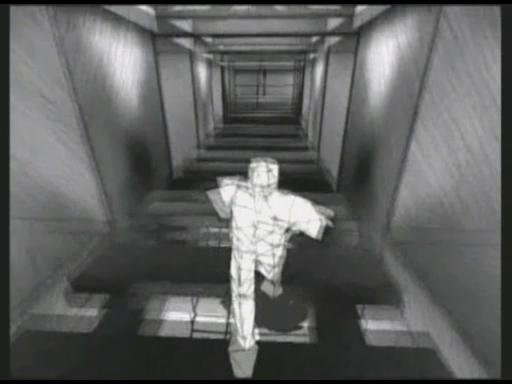LIVE@WTC DESIGN PRESS CON. PIX ETC 2 FOLLOW
WTC Site Designs Revealed While Director Poaches Memorial-Friendly Media
[2018 UPDATE: In 2018 The New York Times reports that five women who worked with Meier, either at his firm or as a contractor, have come forward to say the architect made aggressive and unwanted sexual advances and propositions to them. The report also makes painfully clear that Meier’s behavior was widely known for a long time, and that his colleagues and partners did basically nothing to stop it beyond occasionally warning young employees to not find themselves alone with him. This update has been added to every post on greg.org pertaining to Meier or his work.]
If the 3+ hour multimedia press conference for around 25 brand name architects to present their proposals for the World Trade Center site were Saks, I was the chick selling hand-beaded mittens from a card table on the sidewalk. Actually, as a media event, it was more wholesale than retail; press and LMDC staffers outnumbered Invited Guests about 3:1. So rather than just spam the (presumably interested in memorials) crowd with cards for tomorrow’s screening, I switched to providing background and “context” to the media folks and sharing thoughtful opinions and quotes on the designs. (ex. “They sure don’t build ’em like they used to,” opined Greg Allen, a New York filmmaker whose documentary about a WWI memorial opens today at MoMA…”)
So, how are they? Well, compared to the first round of designs announced in July (which sucked), things are looking up. As one juror told me, the overall high quality of these designs just makes him realize how depressing last summer actually was, and I have to agree; some of the designs are quite impressive, inspiring, even. Here are some action photos from the event; It was a real scrum for a while.

WTC Bathtub wall under construction, 1968. Image: Museum of The City of New York
Daniel Libeskind‘s memorial proposal, titled Memory Foundation, includes the “bathtub” as well as the towers’ footprints. The bathtub–a watertight, concrete, underground structure designed to hold back the Hudson River–should be recognized as a symbol of strength and resilience, says Libeskind. The New Yorker re-published a fascinating 1972 account of the bathtub’s construction by Edith Iglauer.

Foster & Partners, “tallest, cleanest” etc.. Image: LMDC
Lord Foster’s presentation shows why he got the upgrade (from Norman and Sir, for that matter). He was smooth, his images were clear and seductive, and he dropped references to his work so lightly (“The Reichstag is a memorial itself, really…”), that selecting his two towers “which kiss and touch and become one” seemed inevitable.
In an unexpected train wreck of a presentation, the “Dream Team” (Richard Meier’s opening words), sought to shun ego and it’s evil progeny, “architecture.” At least they avoided the architecture. Meier’s unfortunately morose presentation matched the missed opportunities of their proposal.
I say missed, because in the most impressive presentation and proposal of them all, United Architects, another team effort, nailed the incredible potential of ideas the Dream Team had right in front of them. Even though it appeared in other proposals, too, UA made a Sky Memorial a reality by showing that it already exists; Greg Lynn talked of the team members’ early and overwhelming visits to the families’ viewing room, which overlooks Ground Zero. They proposed one memorial 60 stories in the air, atop the first building to be constructed at the perimeter of the site. Gradually, four more towers would join it, forming a “cathedral-like” arc around the memorial in the footprints.

United Architects, view of (1620′) towers from footprint memorial. Image: LMDC
The towers would angle toward each other across the restored street grid, forming a massive, new urban space, 60 stories up and five stories high, contiguous across all five towers. To drive their proposal home, they showed an extremely effective film, which alternated views from within the buildings with repeated shots of people on the street looking up, like they used to do. It was surprisingly impressive. See their flash presentation on their site.
As for me, well, I did a fair job of working the crowd, chatting up anyone I saw with a green sticker on (ie., media) and then handing out quotes, reactions, and the cards for tomorrow’s screening of Souvenir (November 2001). There were some very nice responses, and no one seemed to equate this kooky project with the scattering of amateur memorialists and professional World Trade Center groupies who crowded the periphery of the event. Combined with the encouraging replies from the mailings that went out, tomorrow could turn out alright.
Irish Hunger Memorial, also at the World Financial Center

On his photo weblog lightningfield, David Gallagher published some photos and reviews of the Irish Hunger Monument which opened this summer in Battery Park City. The Monument is designed by artist Brian Tolle, whose idea was to create a 1/4 acre plot of Irish farmland in Manhattan. This patently artificial landscape recalls the British land policies which exacerbated the Irish potato famine of the 1840’s. Critical response to the monument has been mixed, but I have to appreciate the work’s solid conceptual basis. There’s a cautionary tale here, though, about how to deal with constituent and political exigencies; according to one reporter’s account, Tolle argued against several elements which have come under criticism. (When a monument brags about having “nearly two miles of text,” feel free to worry.)
Documentary Fortnight, Last Night
Last night was the filmmakers’ reception for Documentary Fortnight, which followed a screening of Family, by Sami Saif and (So)Phie Ambo (see below). The film was pretty good; the nervous Sami’s emotionally high-pitched quest to find his Yemeni father. Arriving in Yemen, Sami tells one of many “uncles” how he, his brother, and his Danish mother suffered after his father ditched them in Denmark. With girlfriend Sophie behind the camera, the film has an uncomfortably intimate feeling, well suited to its raw subject.
 At the party, I met several of the other filmmakers, and we traded notes on the festival, the audiences, Sundance, and PR stunts (more on this later). One standout: Satoshi Ono, whose film Danchizake (Homemade Sake) screened last Friday. It’s a contemplative story of his family’s relationships which reveals itself as his father brews sake. Jeff Hatfield, friend/cameraman on my documentary/artist, came with me, and, wouldn’t you know it, he’s exhibited a fully functional moonshine still in a couple of museums, so they had a lot to talk about.
At the party, I met several of the other filmmakers, and we traded notes on the festival, the audiences, Sundance, and PR stunts (more on this later). One standout: Satoshi Ono, whose film Danchizake (Homemade Sake) screened last Friday. It’s a contemplative story of his family’s relationships which reveals itself as his father brews sake. Jeff Hatfield, friend/cameraman on my documentary/artist, came with me, and, wouldn’t you know it, he’s exhibited a fully functional moonshine still in a couple of museums, so they had a lot to talk about.
Ono’s next film will be about his grandparents, (similar to my first project) so we definitely had a lot to talk about. When the Festival folks heard us speaking Japanese, they freaked out, wondering why I hadn’t mentioned it before. (Apparently, there was only budget enough to get a translator for one day, and they’d been doing a lot of sign language.)
Anyway, when I told a couple of other directors about my film and the upcoming presentation of architects’ designs for Ground Zero, they invariably suggested passing out cards for Souvenir at the World Financial Center event. Sounds good to me, so watch for the Kozmo.com jacket again. Remember: Souvenir is screening Thursday at 2PM…
On Short Films, Mine and Others
 Documentary Fortnight at MoMA is underway. The first event I’ll be attending is tomorrow (sun.) night, a screening of Family by Sami Martin Saif and Phie Ambo. After the deaths of his mother and brother, Saif travels from Denmark to Yemen to find his father. There’s a filmmaker reception after that. I’ll give you a report. Let me know if you’re going, or look for me there. That’s me in the orange Kozmo.com jacket.
Documentary Fortnight at MoMA is underway. The first event I’ll be attending is tomorrow (sun.) night, a screening of Family by Sami Martin Saif and Phie Ambo. After the deaths of his mother and brother, Saif travels from Denmark to Yemen to find his father. There’s a filmmaker reception after that. I’ll give you a report. Let me know if you’re going, or look for me there. That’s me in the orange Kozmo.com jacket.
Blocking out the production schedule for Souvenir January 2003, the next short, which will be shot in Springville, Utah (aka “Art City”). Here’s the script. For reference, check out the documentary in the Projects column at left.
In the Guardian, Duncan Campbell reviews 11″09″01, the collection of 11 Sept. 11-related short films produced by Alain Brigand, and loudly laments its lack of US distribution prospects. [The film’s site has interviews will all eleven filmmakers. In French.] Frankly, I’m still pissed that I missed a screening last month at Columbia.

image: bacfilms.com
Campbell mentions the Sean Penn installment I wrote about earlier (starring Ernest Borgnine, the new greg.org poster boy). Penn remembers that loss “occurs every day, and the suffering that follows.” Here’s the Read Google translation of Penn’s director statement.

image: bacfilms.com
In her short, Mira Nair tells the true story of a Muslim New Yorker’s unexplained disappearance on September 11. [Read about her latest feature, Monsoon Wedding, in Filmmaker Magazine.
Alejandro Gonzalez Inarritu‘s segment has repeatedly been singled out as the most powerful in the film; sounds and voices over a black screen punctuated by fleeting clips of people jumping from the towers. A question appears on the screen at the end, “Does God’s light blind us or guide us?” It’s a question Inarritu intends for both sides, since both invoke God in a battle of good and evil.

Kissinger sharing the spotlight with Chilean dictator Augusto Pinochet
Ken Loach must have found Henry Kissinger’s brief appointment to a September 11th commission to be a cruel joke. His segment deals with the one of Kissinger’s pet projects for Nixon, the bloody 1973 overthrow of the civilian government in Chile, which cost over 30,000 lives. [Read Seymour Hersh’s <1982 Atlantic article about Kissinger driving the coup.] It took place on Sept. 11.
About Schmidt: The Thinking Person’s “My Big, Fat Greek Wedding”
Nobody’s Perfect, indeed. If Anthony Lane can’t get beyond Jack’s celebrity, fine. He saw the movie at the NY Film Fest opening. His unabashed pinky-extended criticism almost always gives an enjoyable read. (Need some holiday cheer? Get his collected reviews, Nobody’s Perfect, today Don’t even think you can stuff a stocking with it or take it on a plane, though.)
But Salon’s review by Charles Taylor seems to be such a bitter, willful misread of the film, it defies explanation. So let me explain: Taylor actually misunderstands the audience, or more precisely, large swaths of the population of the US, including the hundreds of millions of excruciatingly normal people who fail to “delight (movie directors as) eccentrics and kooks and small-town oddballs” and who would never consider themselves “vulgar and naive and tacky,” just the opposite.
In About Schmidt as well as his previous films, Alexander Payne proves that excruciatingly normal doesn’t automatically mean boring. Just the opposite. In a long Times article, A. O. Scott tries to place Payne’s (and Nicholson’s) Schmidt in a grand tradition of the “mythic cinema hero, The Regular Guy.” This tradition extends from the creations of Clifford Odets, Sinclair Lewis, Arthur Miller, and John Updike to “just about every movie cop and sitcom dad.” (Sitcom. Remember sitcom.) Although Scott cites Jimmy Stewart and Fred “My Three Sons” MacMurray, the only actual movie he cites is Marty, which Delbert Mann had originally directed on television. Mythic, indeed.
Marty is the classic immigrant affirmation story, which won Oscars in 1955, for its star (Ernest Borgnine, nee Borgnino, an Italian), writer Paddy Chayefsky, a Jew from the Bronx) producer (Harold Hecht, a Jew from Poland), and director (Mann, from…Lawrenceville, Kansas). Beset by his loud Italian mother and family and feeling fat an unattractive, Marty falls for a teacher; the mismatched couple overcomes the family’s objections and their own insecurity on their way to their fairytale marriage. Sound familiar? It should, since it’s the same damn plot as My Big, Fat, Greek Wedding.
David Denby rightly called Greek Wedding on its big, fat sitcom roots, and the story of how its unexpected success among The Ignored caught Hollywood and the culture capitalists off guard is now accepted wisdom; Denby’s own New Yorker review didn’t even appear until September, six months after the film’s debut, and presumably, after Denby’s aunts and mother wouldn’t let him off the hook for ignoring it any longer. For The Ignored, it’s their own story, told in the style they were trained by television to expect. About Schmidt is a remarkable film about The Ignored that tells their own story in a powerful, serious way. It may never achieve the box office success of Greek Wedding, which is too bad. For the first time in fifty years, there’s actually a good film about a Mythic Cinema Hero.
Guess J. Lo Was Busy, or The Adaptation of About Schmidt
Louis Begley spoke before a screening of About Schmidt last night. An extremely genteel guy, he explained why he’s quite pleased with the film, even though it differs significantly from his novel. For Begley, “write what you know” means Schmidt (“known as Schmittie to one and all”) is an Upper East Side lawyer, recently retired to Bridgehampton, something, presumably, a vast majority of the screening audience knows well, too. Consistently for Alexander Payne, “film what you know” means a studied exploration of the middle of Middle America: Schmidt is an Omaha actuary whose retirement plans involve a Winnebago.

image: aboutschmidtmovie.com
The only disappointment Begley voiced was the elimination of his saucy Puerto Rican waitress character who (brace yourself) teaches Schmidt to love again. Or, more precisely, she “teaches Schmittie the transformative power of sex. [audience titters] You laugh. It’s true. Maybe you’re just too young to understand.” But then he gamely allowed that Payne may have been poking fun at this idea with Kathy Bates’ hand-painted clothing-shedding hot-tubber. Um, yeah.
While I’ve heard it described as a comedy, the laughs were all at things that are quite real outside the culture capitals; if you’ve been there, or are honest about being from there, your laughter is slightly embarassed and at yourself. (I’m not talking about my own proto-mullet here.) Begley sounded a little resigned when he said he couldn’t see the future holding anything good for Payne’s Schmidt. As I did in September, I have disagree and side with Payne. If taken at the most superficial level, you could argue that Schmidt’s transformative experience at the end is a pretty meager reward for all that preceded it. Why, it’s practically a, um, a money shot. What it may be is the difference between sex and love.
[12/12 update: Alexander Payne will be on Studio 360 this weekend. AND he will be given the Work In Progress award by the MoMA Department of Film and Media next February. Stay tuned.]
New Script, and the Souvenir Series
Early in the editing of Souvenir November 2001, I decided to eventually expand the short film into a related series of shorts, all ultimately interconnected a la Kieslowski’s Dekalog (See the movie index for more references).
A couple of weeks ago, it became clear that the original documentary project which spawned greg.org could fit in this Souvenir series in some way. The result of this confluence: Souvenir January 2003, a short film about a man’s quiet appreciation of ironing. Look forward to your comments.
AYUAM second draft completed. Get me rewrite!
The last couple of days have been pretty productive, and I’ve managed to get out the second complete draft of the As-Yet Unannounced Animated Musical (AYUAM or AM for short) script. It’s probably even less fun to read about an unannounced than it is to write cagily about it. Sorry. Here on the weblog, I’ve been trying to come up with thematically consistent and entertaining links and clues over the last few weeks, creating a scattershot mosaic of references that, if pieced together, should amply prepare you/pump you up for the actual story. In fact, though, I count on the short attention span-weblog format to keep the dots unconnected. (For better or worse, I don’t have an army of decoding gamer/readers, a la that secret A.I. promotion a couple of years ago).
Where it stands: The story, plot and action are all in place and pretty tight. The present/future/flashback narrative structure makes sense, too. At least as much as it’s gonna. In addition to our (anti-)hero (it’s based in part on a true-crime story, remember), there are 3-4 other major characters, depending on how you count. Of these, I’m still only fully satisfied with the characterization of two of them. The other three are close, but not done. It’s a combination of action/reaction, dialogue, and how they change/reveal themselves over the course of the story.
Global issues:
[For an example of how a script can change by bringin’ in the big musical guns, check out this draft of South Park, which predates some of Marc Shaiman’s contributions.]
“Mormon cinema on a mission for profits”, an article that causes me a crisis of faith, frankly. Like to know more? Check out LDSfilms.com, a good old-fashioned portal, with Mormons I knew/knew about (Aaron Eckhart, Neil LaBute, Walter Kirn) and Mormons I didn’t know about (Tom Hanks, Matthew Modine). No obligation, and no one will visit your home.
A Scene from Smoke
9. INT: EVENING. THE BROOKLYN CIGAR CO. [search for “9” on the page]
…
…
Screenplays for You, I think this is the beginning of a beautiful friendship. [thanks to Lightning Field]
The Reel Truth: Getting Behind Behind-the-Scenes
Commercial production house Zooma Zooma is hosting The Reel Truth [Quicktime], a hi-larious, sodium pentathol-laced short film, set on the set of a commercial. My favorite scene is the one with the MBA client in it:
INT – SOUNDSTAGE
Accompanied by the ass-kissing PRODUCER, the suit-wearing BRAND MANAGER visits the set to consult with the DIRECTOR.
BRAND MANAGER Can I look through the camera?
DIRECTOR Of course, of course.
It’s a little known fact that some of the world’s best cinematography is the result of input from arrogant, pinheaded business school grads like yourself.
BRAND MANAGER Oh, Naturally. (pause)
I think we should go tighter. I don’t really know why, or even what I’m talking about, but this is my sole creative act this year, aside from choosing the color of my minivan.
This just confirms the genius of my original idea: What if we make the business school grad the director? My brilliance dazzles even me sometimes… [via BoingBoing and this Jim Griffin]
Followup: According to AdAge, director Tim Hamilton made the short as a sequel to Truth in Advertising, for an awards show. And if you have to ask his nationality, well…
Places Where It Feels Odd To Be Reading Gravity’s Rainbow
 It’s not quite like whipping out your copy of Lolita at the playground, but it sometimes feels weird to read Gravity’s Rainbow “in public.” Can’t say if it’s the book itself, which is rather unsettling and is shot through with Strangelove-ian absurdity; my used paperback copy (which I sought out for instant authenticity, as if I pulled it off that cinderblock bookcase I apparently had in apparent grad school); the conspicuous tape job (I was clearly the first person to crack the spine. Documenta packing tape ROCKS, by the way.); or general marginalization anxiety (Anthony Lane, quoting and reviewing Mason & Dixon: “‘What we were doing out in that Country was brave, scientifick beyond my understanding, and ultimately meaningless.’ He sounds like a reader of Thomas Pynchon.”).
It’s not quite like whipping out your copy of Lolita at the playground, but it sometimes feels weird to read Gravity’s Rainbow “in public.” Can’t say if it’s the book itself, which is rather unsettling and is shot through with Strangelove-ian absurdity; my used paperback copy (which I sought out for instant authenticity, as if I pulled it off that cinderblock bookcase I apparently had in apparent grad school); the conspicuous tape job (I was clearly the first person to crack the spine. Documenta packing tape ROCKS, by the way.); or general marginalization anxiety (Anthony Lane, quoting and reviewing Mason & Dixon: “‘What we were doing out in that Country was brave, scientifick beyond my understanding, and ultimately meaningless.’ He sounds like a reader of Thomas Pynchon.”).
1. In the middle of a crowded contemporary art auction at Christie’s. (Just during the lulls, the Bleckners and the Basquiats).
2. At Singin’ In The Rain, which I found to be kind of corny. Or is it just me? Wendy Wasserstein loves it and claims it’s not “cloying or campy.” In some moments, the saturated colors and weightlessness prefigure Jacques Demy’s Umbrellas of Cherbourg, which I like much more (and which turns out to be anything but weightless).
The Comden & Green “Moses Supposes” song is pretty good, though, possibly because it tries even a little to fit into the story. And I came away really admiring the long, near-stationary takes during the musical/dance numbers, the “master-master”, if you will. It’s the diametric opposite of Moulin Rouge (110+ edits/min in songs). I’d like to reference/adapt this in the Animated Musical, and I think it can work well, as more than just historical homage.
Long choreographed shots of musical scenes live on in the auteur-y crane/steadicam shots directors show off with (cf., The Shining, Touch of Evil, The Player, Goodfellas, Boogie Nights, Bonfire of the Vanities even).

Video games have turned this symbol of technological virtuosity, literally, into child’s play: first-person shooters are long, unedited takes by definition. Machinima takes advantage of the game “camera” to turn a programmable/alterable game engine into a virtual movie studio. Somewhere in between Scorcese, Anderson Lara Croft is my story, Singin’ in the Rain meets Quake III.
And I Felt A Little Paranoid Before Learning Pynchon Wrote A Musical
“Mistral Island Manuscript acquired by Univ. of Texas”
According to this report from last week, Pynchon collaborated with Kirkpatrick Sale in 1958 to create a musical set decades in the future, where IBM controls the world. Sale gave “Luddite” its contemporary meaning and “wrote extensively on the political, economic, sociological, and environmental impacts of technology.”
I’m backing quietly out of the room…
Pynchon and animation: “Except maybe for Brainy Smurf, it’s hard to imagine anybody these days wanting to be called a literary intellectual, though it doesn’t sound so bad if you broaden the labeling to, say, ‘people who read and think.'” (from “Is it OK to be a Luddite? in the NYTimes.)
And Pynchon and comic books: Charles Bock’s loong, engaging ArtKrush rumination on Tolstoy, Great Art, and growing from the X-Men to, yes, Gravity’s Rainbow.)
And some (non-Pynchonian) animation links: Toon Shader, a software tool for bringing hand-drawn cel animation and computer animation together, created by Michael Arias, a CG Guru who works with Hayao Miyazaki, called the greatest animation artist ever (people at the Mouse think so, too, you know).
A Village Voice article by Anthony Kaufman about cinematographer Ellen Kuras’ ability to make beautiful DV.
On Illegal Art

Superstar, 1987, Todd Haynes
Last night we (finally) saw Todd Haynes’ Superstar: The Karen Carpenter Story last night. After years of being snubbed by the clerks at Kim’s Video when I’d ask for it, and half-hearted attempts to get a bootleg copy from someone or other, we just walked over to Anthology and there it was, showing as part of Illegal Art!.
(The first time I went to Kim’s, a Suit workin’ for the Mouse but livin’ in Chinatown and yearning for street cred, I cannily asked if Bladerunner wasn’t in the Ridley Scott section. The scornful reply: “Noo, the Douglas Trumbull section.”)
Anyway, Superstar turned out to be both better and worse than I imagined. Definitely worthy of its reputation, it’s a canny film; it’s a little eerie how well the Barbie doll concept works. The bootleg copy they showed, though, sucked. If only there were a medium you could copy without generational degradation… [If you don’t have connections to the video underground either, you can watch Superstar in even lower-res online.]

Giant Steps, stills, 2001, Michal Levy
Other films screened with Superstar, all using unauthorized/illegal footage or music in some way. For my money, the best ones were not about appropriation per se; Michal Levy’s Giant Steps, for example, is a fun, beautiful CG interpretation of John Coltrane’s canonical (and surely impossible to clear) recording.
A slightly unrelated note: Apparently, my new haircut is something of a proto-mullet, not unlike Todd Haynes’.
Aspen: The Magazine in a Box (on the Web)

Serial Project #1, 1966, Sol Lewitt, from Aspen 5+6
Unbelieveable. The entire collection of Aspen: The Magazine in a Box, is now online. It’s the magazine equivalent of Kieslowski’s Dekalog: almost completely unknown, yet highly respected and influential within its narrow audience.
In a fit of John Cage admiration, I tracked down and bought Aspen 5+6 several years ago. In addition to some floppy little records with Cage and Morton Feldman on it, there’s a reel of 8mm film with works by Laszlo Moholy-Nagy, Robert Rauschenberg, and others; documents of Sol Lewitt’s seminal
Not owning a record player or an 8mm projector, my edition of Aspen has been more a glassined, bubblewrapped holy relic than anything else. Until now. The Moholy-Nagy film is full of glare, shadows and light reflecting off of machinery, as if Jeremy Blake and Paul Thomas Anderson were the same person. Check it out. Thanks, UBU (and thanks, Fimoculous for the link.)
